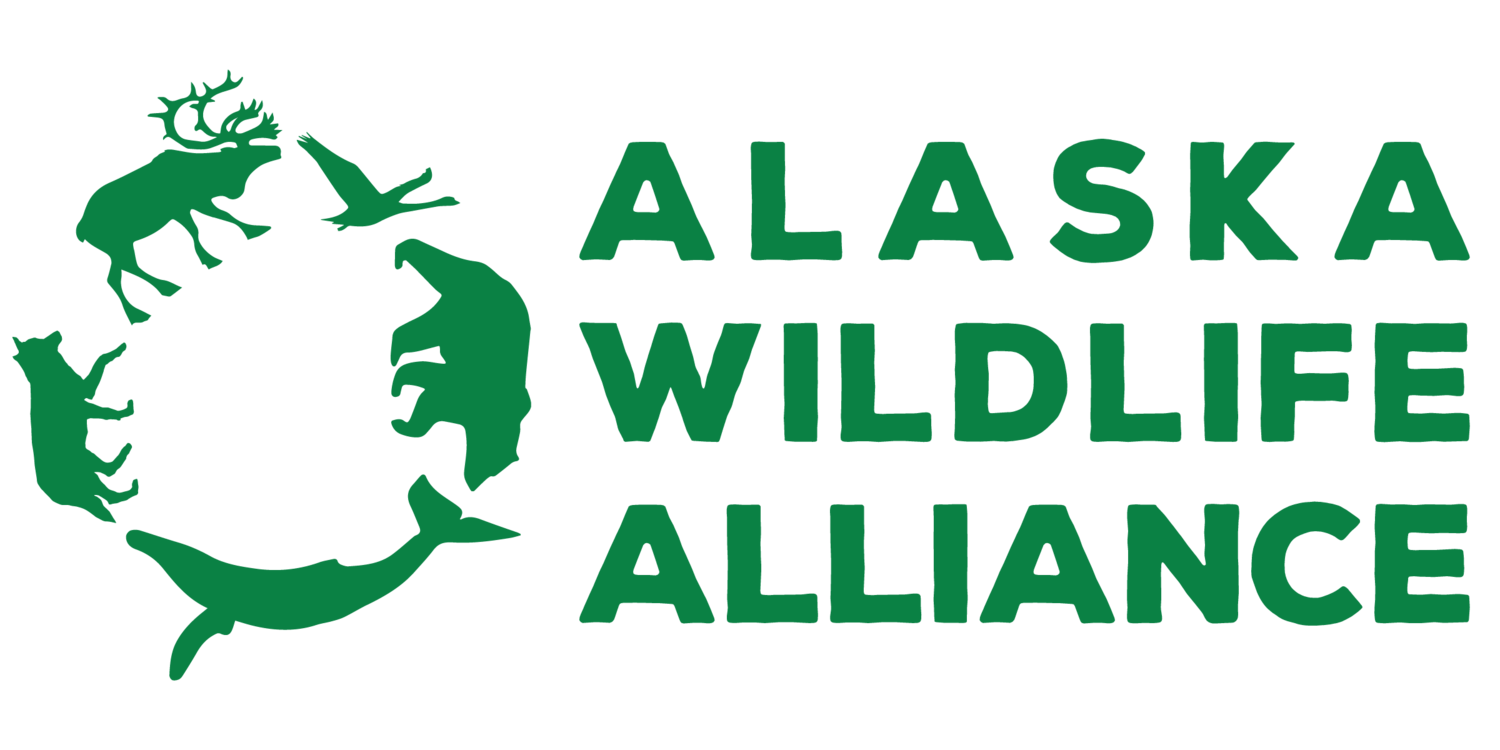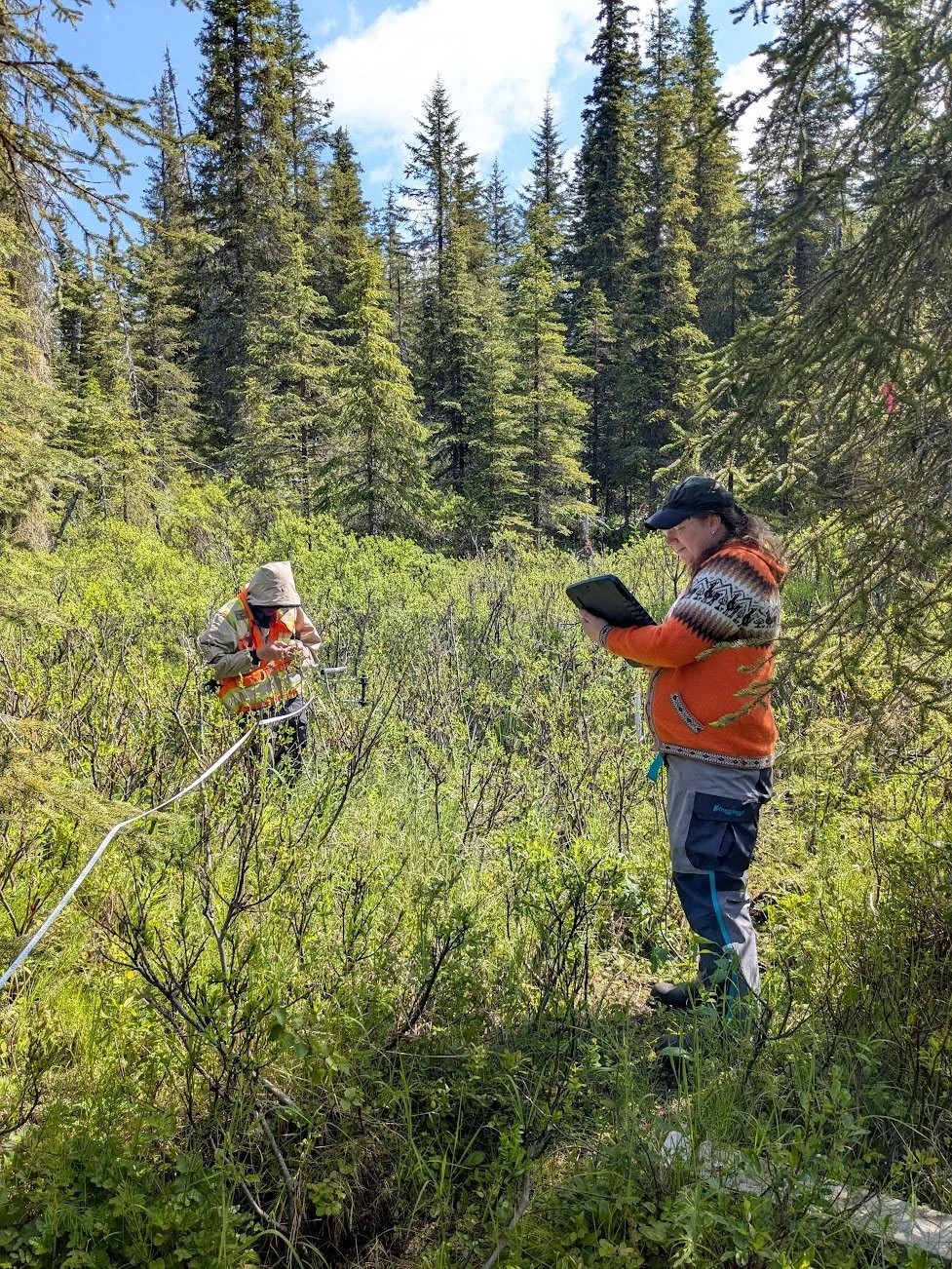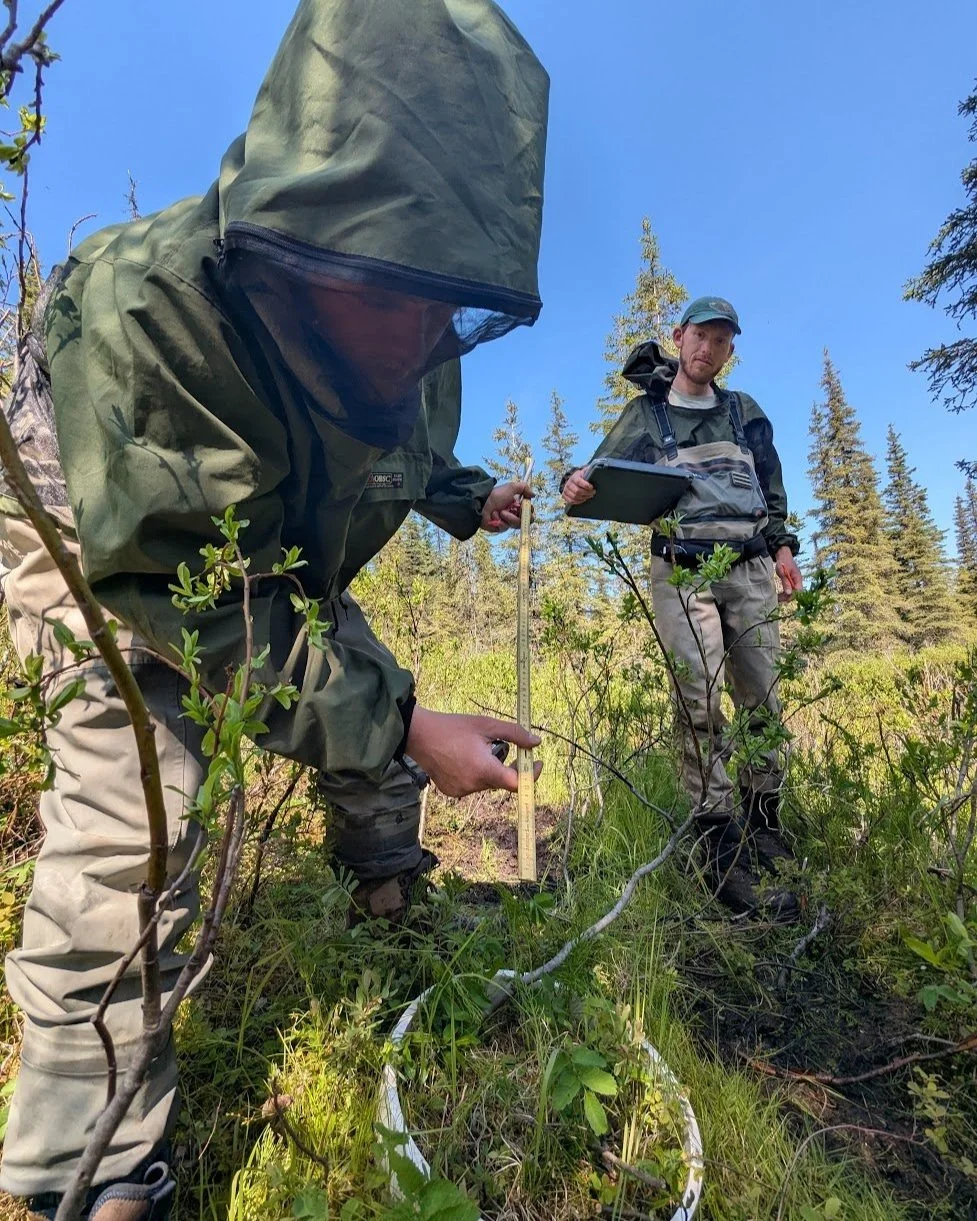Alaska Wildlife Alliance spent some of June working at our beaver dam analog and repaired beaver dam sites on the Kenai Peninsula with our partners, the Kachemak Bay National Estuarine Research Reserve, the Alaska Center for Conservation Science, and the University of South Florida Ecohydrology Research Group.
Since 2023, we have monitored three demonstration sites on the Kenai to test beavers as a nature-based solution to protecting Kenai’s peatlands. In 2024, we repaired a previously breached beaver dam, created a beaver dam analog (BDA), and observed a control site. At each site, we are monitoring the influence of beaver dams on the water table, carbon exchange, and vegetation. We're hoping to demonstrate that beavers and their dams can combat climate change on the Kenai Peninsula and use beavers to help conserve over 30,000 acres of peatlands.
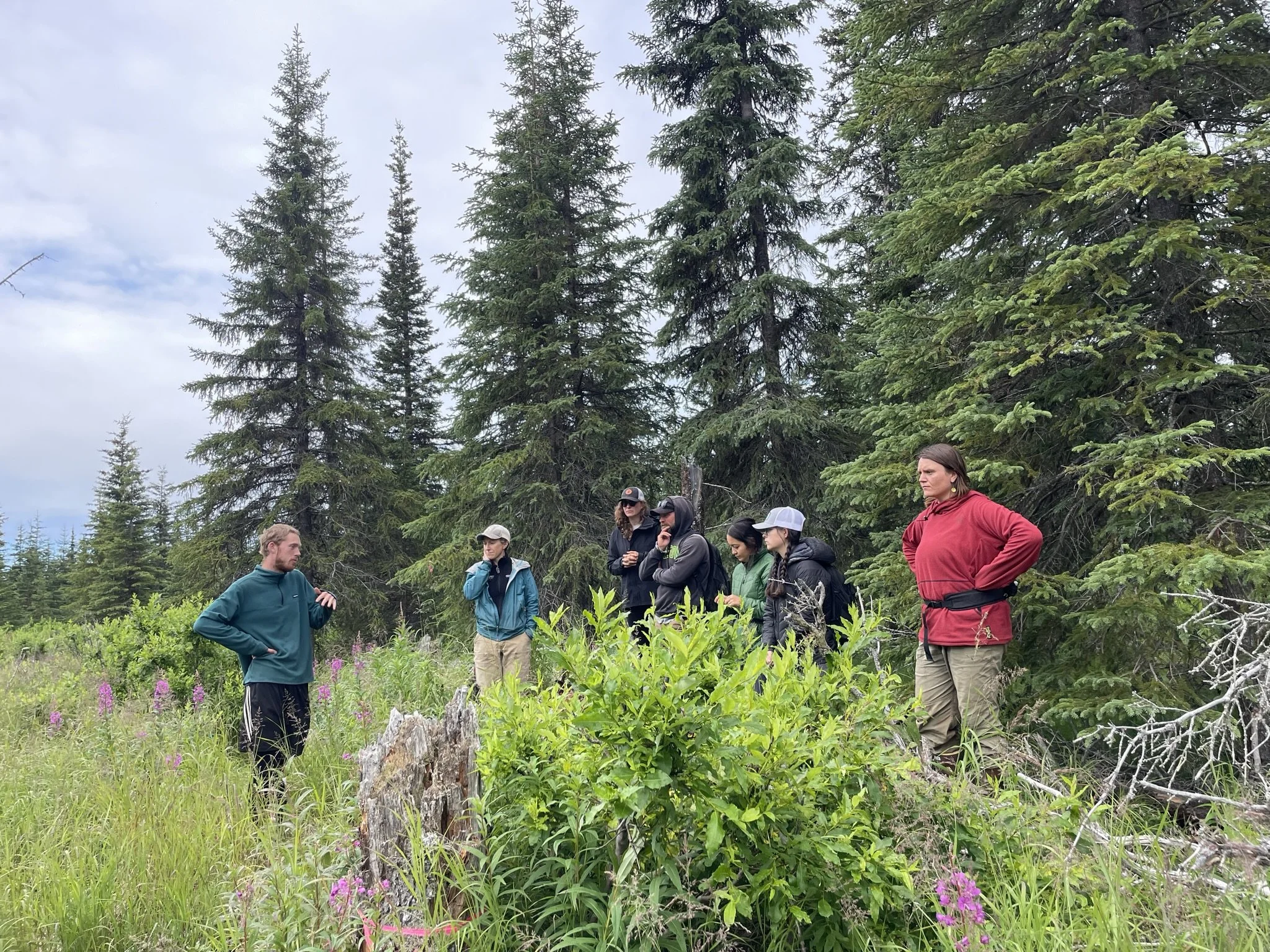

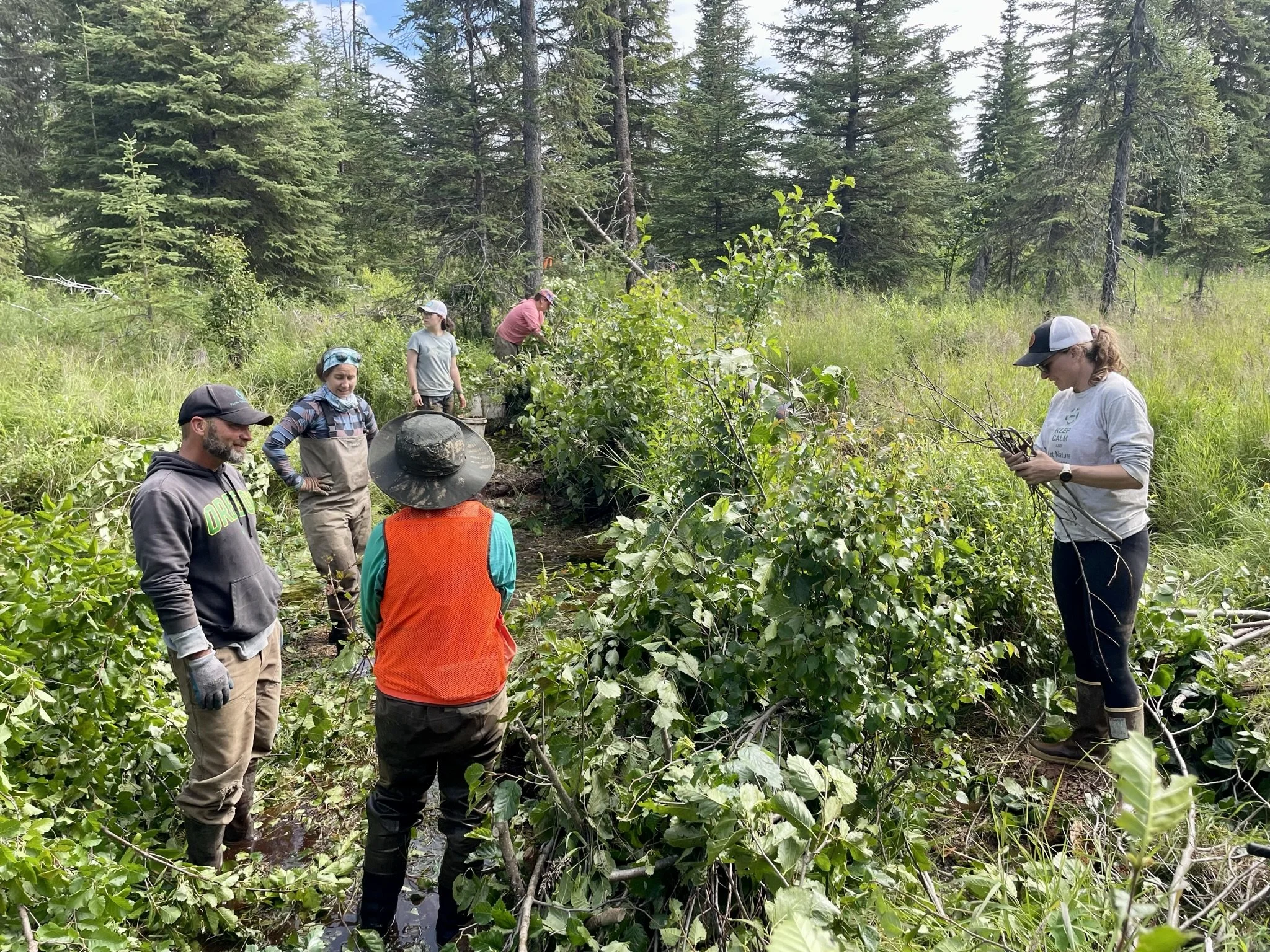
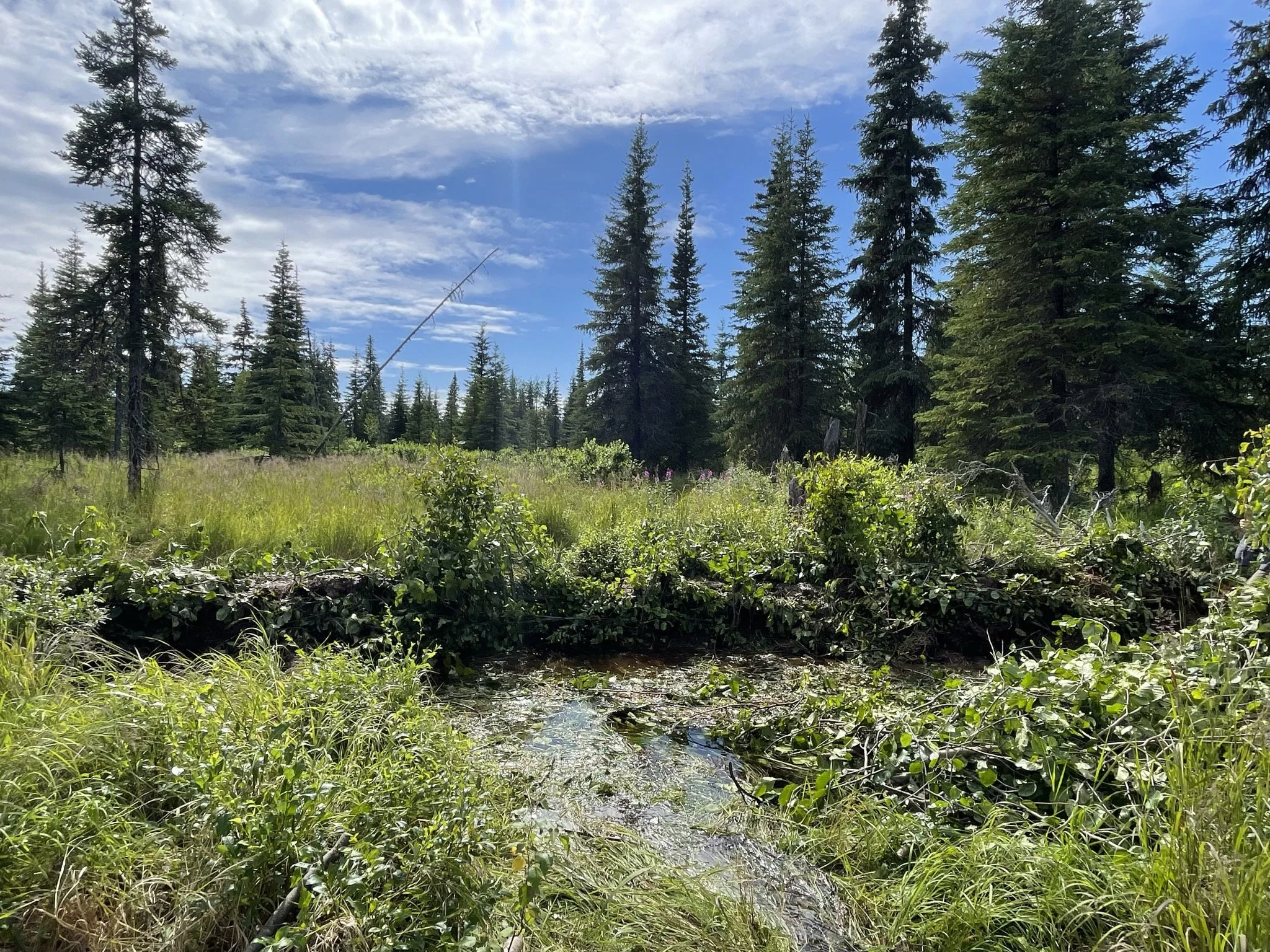
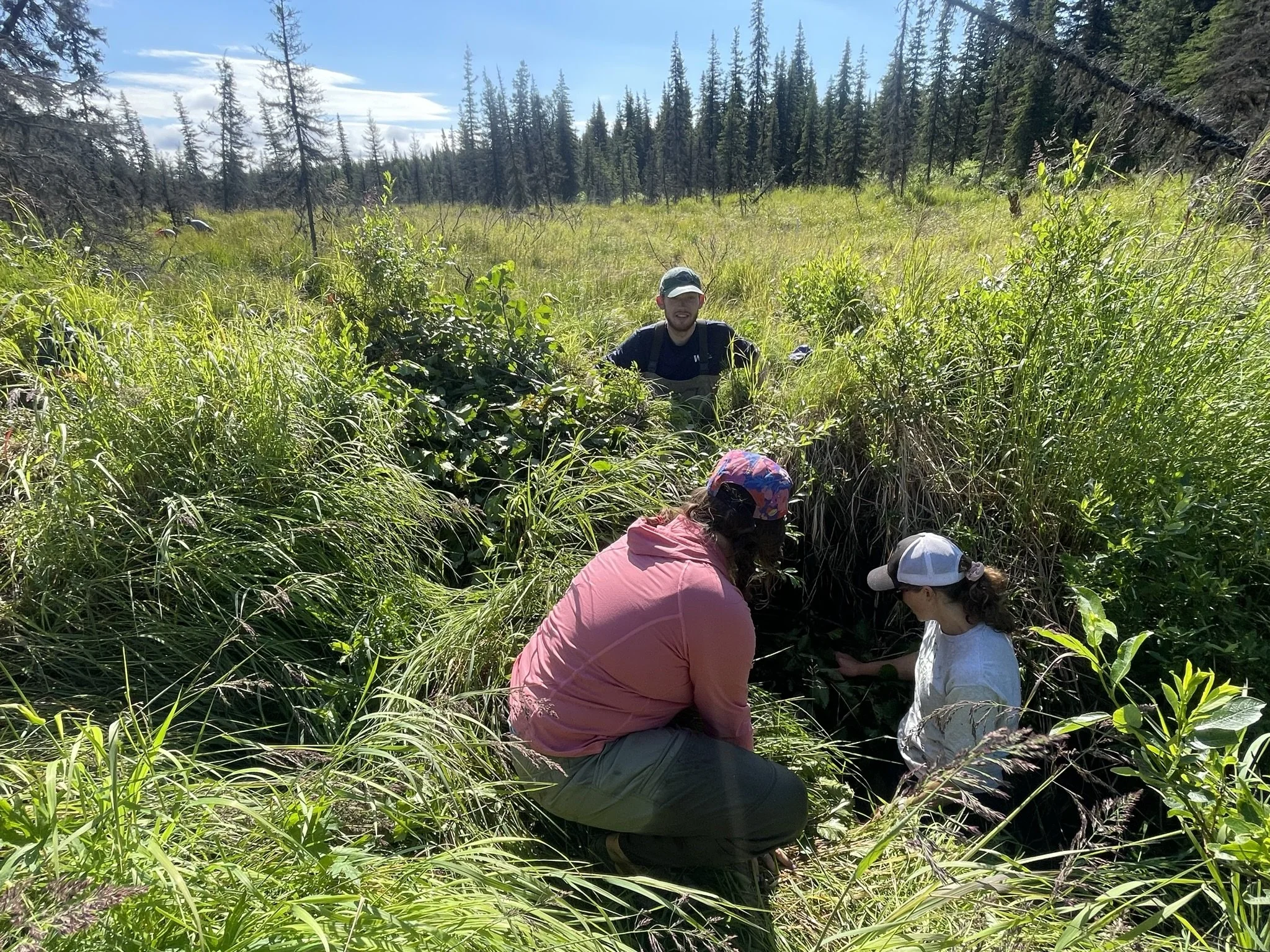
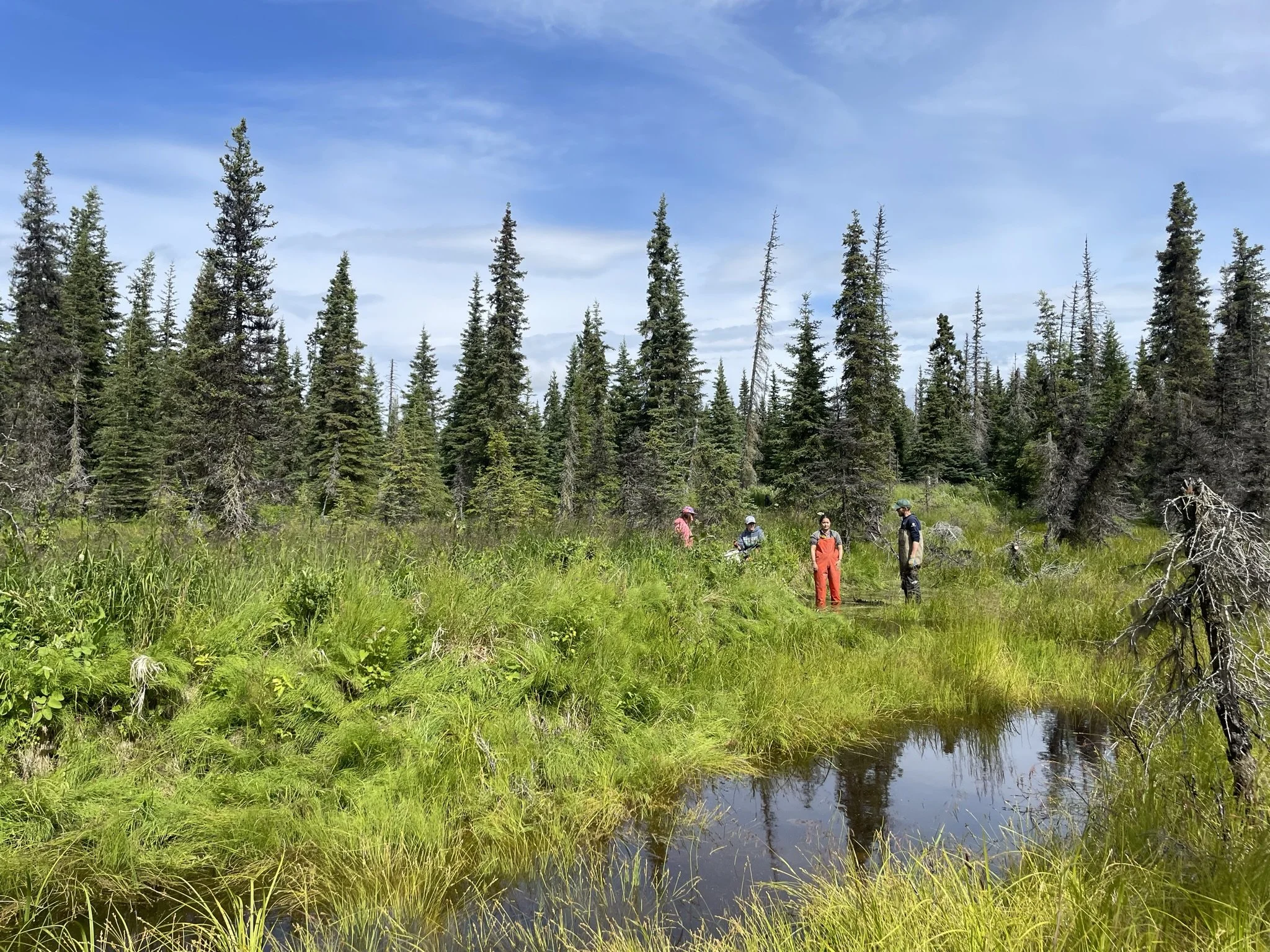
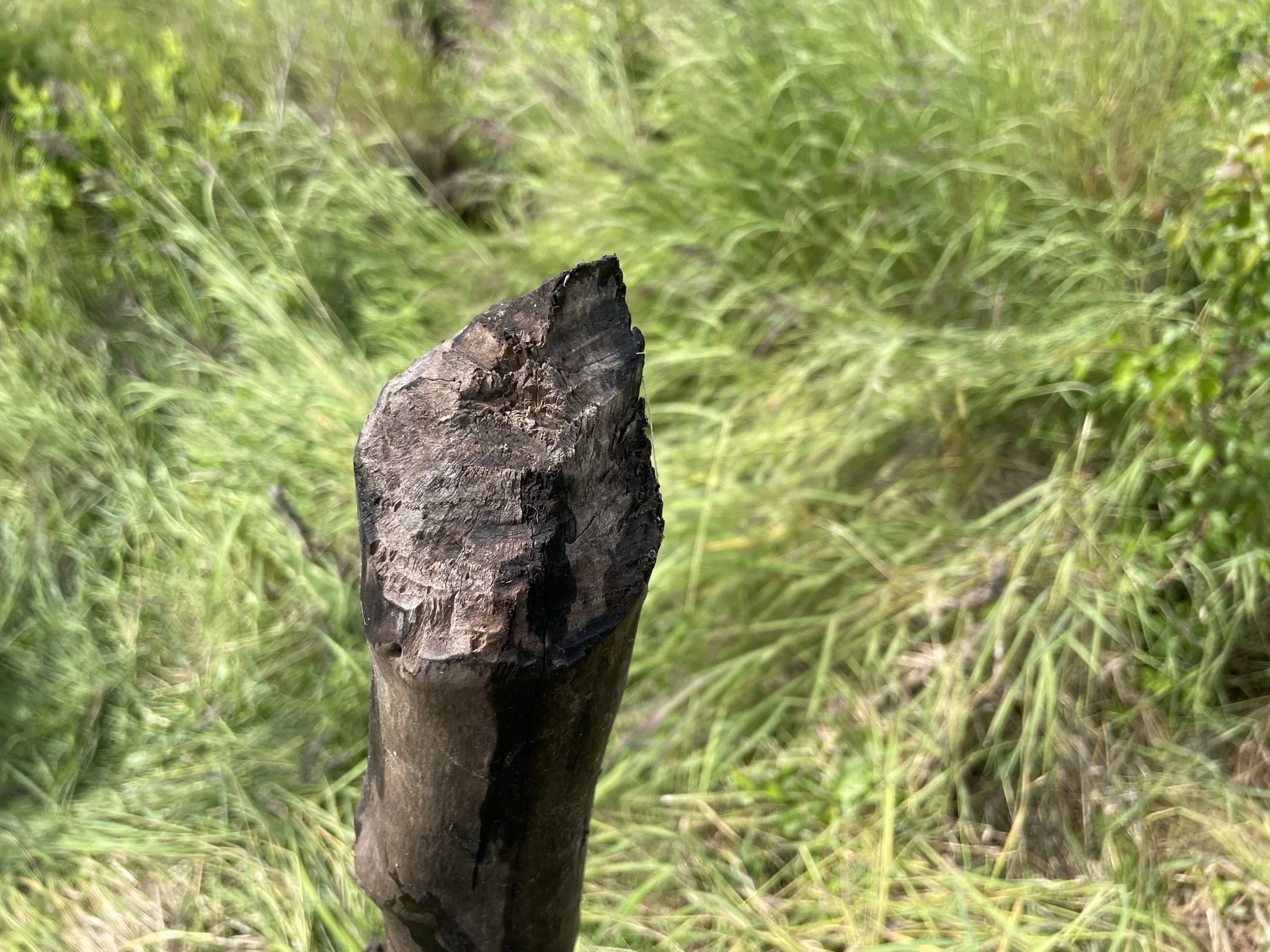
In June 2025, we revisited the site for a week of fieldwork and data collection. Our landscape ecologist, Joseph, helped with trail maintenance out to the sites and also met with our University of Alaska and University of South Florida partners to iron out the Beaver Suitability Model, which will help us understand where beavers could have a positive ecological impact and do well as a nature-based solution to climate change. The model will help us apply the findings from our Kenai projects to other areas as well.
We also helped our partners, Kachemak Bay National Estuarine Research Reserve, the University of Alaska Center for Conservation Science, and the University of South Florida, collect data from the sites, such as vegetation transects and gas flux monitoring, and trapped minnows. The data will help quantify the hydrologic impacts of beaver dams on peatlands and wetlands, on the Kenai and elsewhere.
Vegetation Transects
The team took vegetation transects at the repaired dam, the beaver dam analog, and a control site. Vegetation transects are straight lines (usually marked with a measuring tape) that cut through a natural landscape so that standardized observations and measurements on the vegetation can be made.
Beaver dams change the hydrology of the sites and water levels, which then impacts the vegetation in the area. By collecting data from vegetation transects, we can see how the sites’ vegetation changes before and after beaver dams are put in, and detect new changes from year to year.
Gas Flux Monitoring
The team has also been monitoring gas flux at the BDA, the repaired dam, and the control site since last June. Gas flux collars are placed below the beaver dam, right above the dam, and farther upstream from the dam, enabling us to measure carbon dioxide and methane exchange at the sites.
Wetlands can be great carbon sinks. With gas flux monitoring, we’re able to determine how fast carbon dioxide and methane is entering or leaving the soil and plants. With that data, we can tell if the carbon storage of the restored wetlands is increasing, which helps quantify the climate impacts of our beaver dam restorations.
The team is also tracking vegetation within the gas flux collars. These data points help us understand what certain vegetation communities can do for methane shunting and carbon dioxide sequestration.
Juvenile Salmonids Trapping
By creating ponds and wetlands, beaver dams help create habitat for anadromous fish like salmon and Dolly Varden. They are particularly critical for juvenile salmon as the slower water offers refuge from predators and strong currents while also providing plenty of insects for young fish to eat. Dams also stabilize water temperatures and trap sediment, which helps buffer salmon against the effects of climate change. Studies show that coho salmon in particular benefit from beaver ponds, and KBNERR and their partners have built a model showing that larger juvenile coho in particular are mostly found in low gradient systems, typically flowing through wetlands.
During our June site visit, we found 10 to 20 juvenile salmonids just above the beaver dam analog, an area which was mostly dry last year. We trapped a few fish to weigh and measure before releasing them.








Stay tuned for more Kenai beaver fieldwork this year, as well as site visits with policymakers! To learn more about our work with Kenai beavers, check out our webpage, Kenai Beavers: Ecosystem Engineers.
